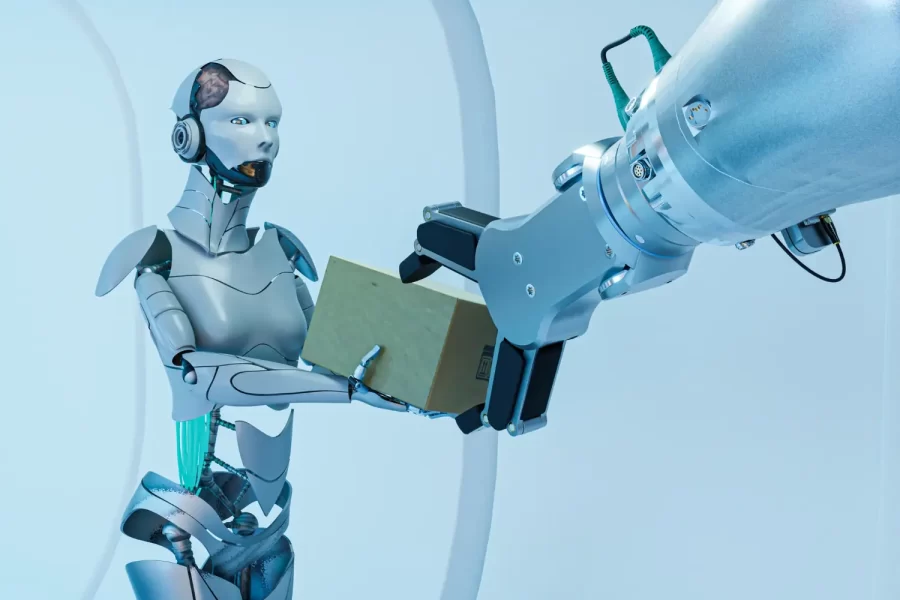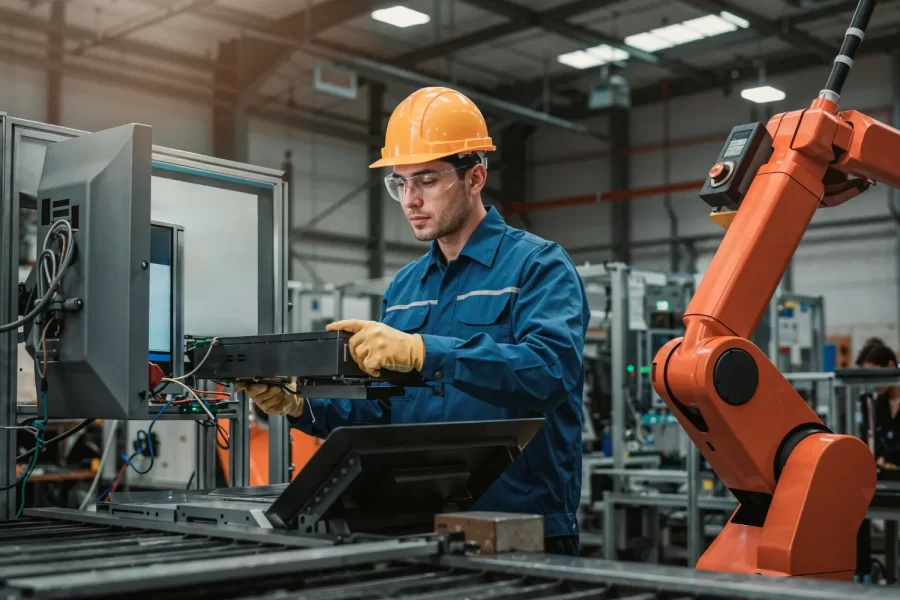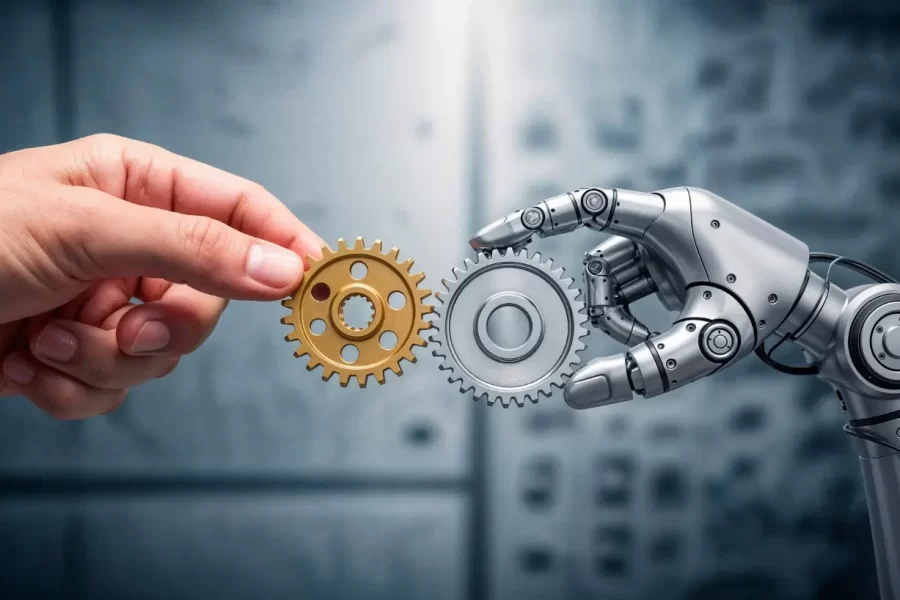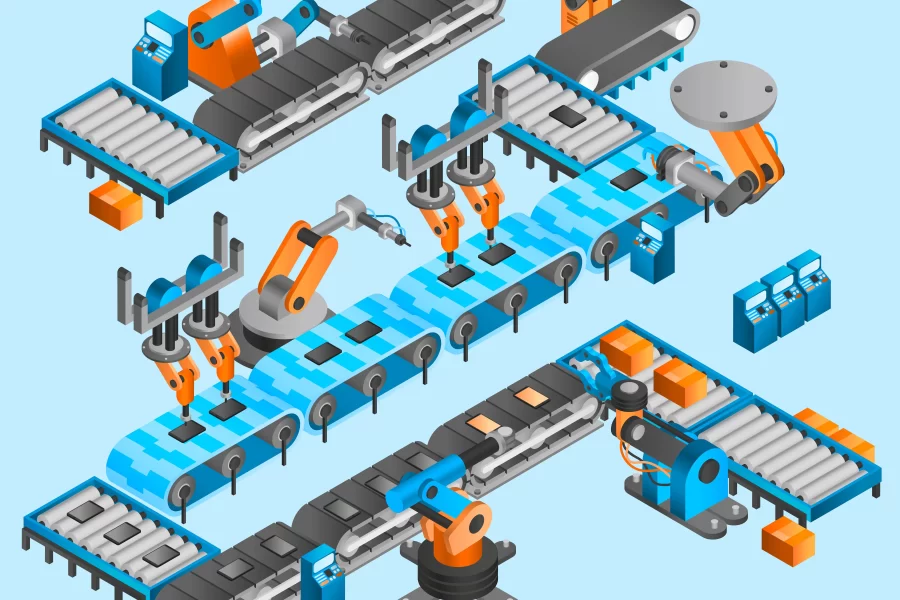
-
31 October 2025
Table of Contents The New Rule of Manufacturing in the Digital Age: Connected Production and AI Why is Feeding Operations Automation (FOA) a Critical Necessity? End-to-End Feeding Operations Automation (FOA) with Sora Robotic How to…

31 October 2025
Table of Contents The New Rule of Manufacturing in the Digital Age: Connected Production and AI Why is Feeding Operations Automation (FOA) a Critical Necessity? End-to-End Feeding Operations Automation (FOA) with Sora Robotic How to…

8 September 2025
Table of Contents How Many Types of Industrial Robots Are There? When Are Delta Robots Preferred? Which Tasks Are SCARA Robots Suitable For? What Advantages Do Articulated Robots Have? Which Robot Type is Suitable for…

8 September 2025
Table of Contents How Do Robots Reduce Production Costs? What Is the Return on Investment Period for Businesses? Are Robots Scalable? How to Gain a Competitive Advantage? When Do Investments Pay for Themselves? The winds…

20 August 2025
Table Of Contents How Does the Use of Robots Affect the Workforce? How Do Robots Improve Quality? Do They Provide a Time and Cost Advantage? How Are Human Errors Minimized? How Do Efficiency and Productivity…

12 August 2025
Table of Contents Which Sectors Benefit from Robot Technology? How Does the Automotive Industry Use Robots? What Do Robots Do in the Food Sector? What Is the Advantage of Robots in Electronics Manufacturing? How Do…

12 August 2025
Table of Contents What Does Industrial Robotics Mean? In Which Manufacturing Processes Are Robotic Systems Used? What Are the Types of Industrial Robots? How Do Industrial Robots Increase Manufacturing Efficiency? What Is the Difference Between…

21 July 2025
Table of Contents Basic Functions of MES and Robotic Systems: How Do They Work? What Are the First Steps for Manufacturing Execution System (MES) and Robotic System Integration? Is an Increase in Efficiency Possible with…

16 July 2025
Table of Contents What is a Robotic CNC Tending System and How Does It Work? Advantages of Robotic CNC Tending Systems for Uninterrupted Production Speed and Efficiency Performance of Robots in CNC Tending Systems Reducing…

11 July 2025
Table of Contents What is the Role of Robotic Grippers in CNC Feeding Systems? How to Choose the Right Robotic Grippers for CNC Machining? Flexibility of Robotic Grippers in Handling Parts of Different Shapes Time…

4 July 2025
Table of Contents What are the Advantages of Robots in Transporting Small Cosmetic Samples? Robot Technologies and Methods Used in Transporting Very Small Products How Do Precision Robots Ensure the Safety of Cosmetic Products? Methods…
Industrial robots have become the backbone of modern production, tirelessly operating in the demanding environments of factories to boost efficiency and create safer workplaces for humans.
When we talk about automation in factories, the most basic question arises: What defines an industrial robot? Generally, an industrial robot is a programmable, multi-functional manipulator designed to move materials, parts, tools, or specialized devices through variable programmed motions for the performance of a variety of tasks. They’re built for repetitive, dangerous, or precise operations.
Understanding their structure helps clarify how they operate:
Robots are typically programmed using specialized robot programming languages (e.g., ABB’s RAPID, KUKA’s KRL, Fanuc’s Karel) or through intuitive graphical user interfaces. Programming involves defining a sequence of movements, speeds, and tool operations to complete a specific task cycle, allowing for easy adaptation to new production requirements.
Industrial robots are pervasive across almost every manufacturing sector.
Here are key application areas where industrial robots excel:
Major sectors include automotive, electronics, food and beverage, metal fabrication, pharmaceuticals, and chemicals, where the demand for high precision, repeatability, and efficiency is critical.
The benefits of integrating industrial robots are significant.
The evolution of industrial robotics is continuous, driven by advancements in digital technologies.
The future of industrial robots is closely tied to the integration of cutting-edge technologies:
However, this advancement also brings challenges.
These include the initial investment costs, the need for a highly skilled workforce for maintenance and programming, cybersecurity vulnerabilities, and the ethical considerations surrounding the impact on human employment.
Industrial robots are not just tools; they are key drivers of efficiency, quality, and safety in global manufacturing. As technology continues to evolve, their role will expand, pushing the boundaries of what’s possible in automated production.
📍 Ferhatpaşa Sb, Sümbül Sk. No:1/2 B1 Çatalca / İstanbul
📞 Telephone +90 (212) 786 61 76
📨 info@sorarobotic.com